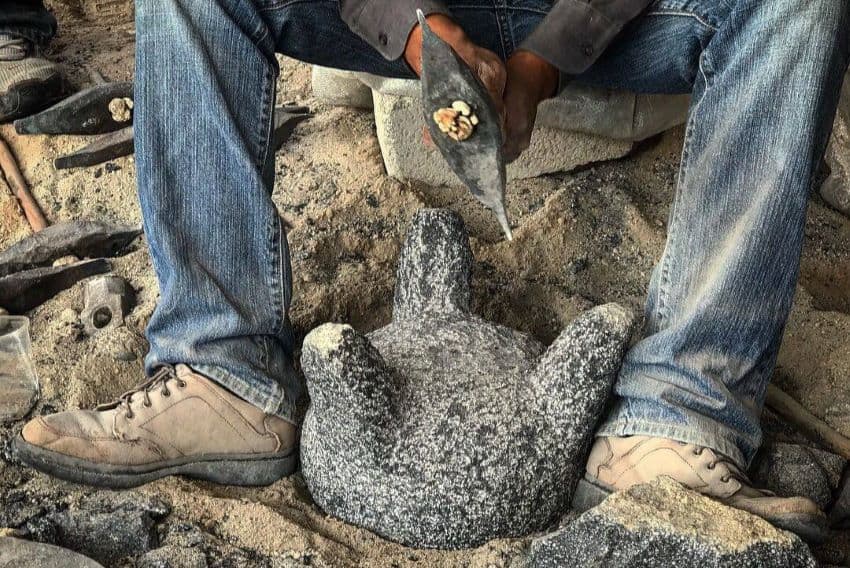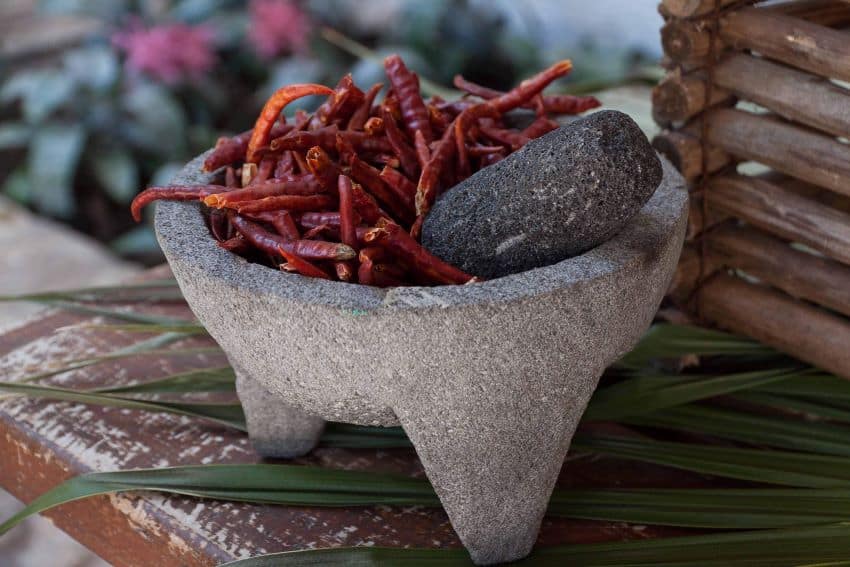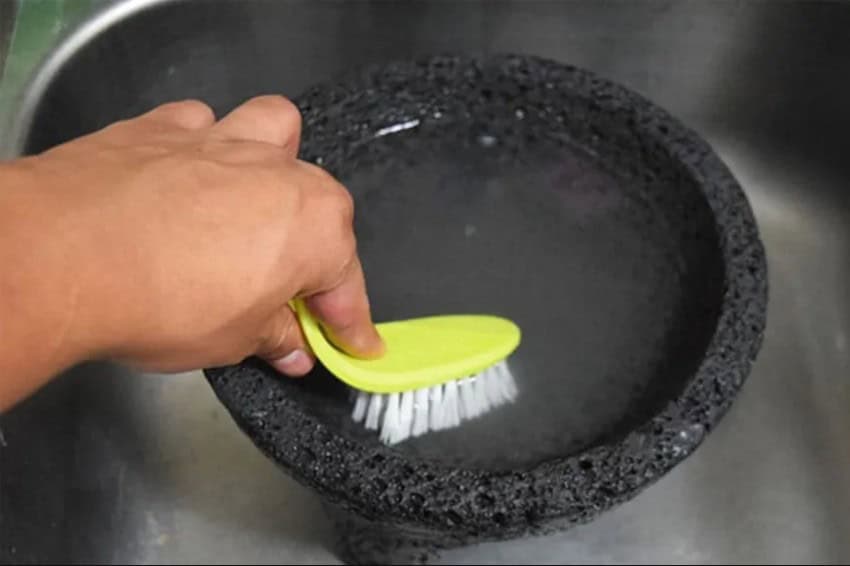Molcajetes have been used across Mesoamerica for centuries and are cherished as one of Mexico’s most beloved kitchen tools. A three-legged stone mortar, the molcajete is made of volcanic stone, as is the tejolote, its cylindrical pestle.
To “molcajetear” — Mexico has a knack for turning nouns into verbs — means pressing and grinding ingredients against the walls of the molcajete, imparting a unique flavor and texture.

Its rough surface is perfect for grinding and crushing a variety of ingredients. Perfect for creating unique flavors and textures, the molcajete is a beloved tool for making salsas, guacamole, dips and marinades. It’s also ideal for grinding spices and herbs, releasing their aromatic oils. Even nuts and seeds can be ground to create flavorful pastes and powders. The molcajete’s rustic charm and efficient grinding capabilities make it a cornerstone of authentic Mexican cooking.
Traditional molcajetes have always been made of volcanic stone, which is natural, non-toxic and safe for food processing. Crafting a molcajete involves a centuries-old carving technique. When you buyone made of volcanic stone, you’re supporting artisans’ craftsmanship and livelihoods.
How to tell if a molcajete is authentic
Buying an authentic molcajete isn’t just about bragging rights. Nowadays, there are many cement replicas for sale that can deceive buyers. The big reason to avoid cement molcajetes is that they’re not safe for cooking. Cement wears away when ground, releasing toxins and paint into your food. So, how can you tell if the molcajete you’re eyeing is made of volcanic stone or cement?
Volcanic stone has pores, since it was once lava cooling off, passing tiny sulfuric bubbles to its surface. Some molcajetes will have a lot of wide pores, while others may have very small orifices. However, all of them have a rugged surface that makes them effective for grinding. A very smooth surface without pores is usually an indicator of a cement piece.

A cement molcajete will absorb water and become evenly soaked, while volcanic stone holds water without absorbing it. However, some volcanic stone pieces have too many wide pores and can leak. While this type may still be an authentic piece, it won’t be a good option for salsa making, as the liquid will filter out.
The ultimate test is curing the molcajete, as one made of volcanic stone will immediately release sediments as part of the process.
How to cure your new molcajete before using
Molcajetes need to be cured before you use them, because the natural stone tends to release residues that you don’t want in your food. Curing for kitchen duty is a simple process involving rice, salt and a little elbow grease:
- Thoroughly rinse and scrub your molcajete with a scrub brush.
- Grind a handful of raw rice and coarse salt with the tejolote. The ground mix will come out a grayish color since it’s catching fine pieces of stone and sediment.
- Repeat with new raw rice and coarse salt until this mix comes out white, signaling a that the curing process is complete.
- Rinse with water. Voila! Your molcajete is ready to rock.
Salsa roja molcajeteada

There’s nothing quite like a salsa roja molcajeteada — oh yes, Mexico also loves turning nouns into adjectives. Here’s a simple recipe to get you started. Remember, salsas are an art form, not an exact science. Channel your inner maestro when picking the type and amount of ingredients you use.
3 red chilis
3 tomatoes
2 cloves garlic
1 pinch dried oregano
1 pinch salt
Fresh cilantro
- Roast the chiles, garlic, and tomatoes on a comal until softened.
- In your molcajete, grind coarse salt and garlic until smooth. Add remaining ingredients one by one and continue grinding until achieving your desired consistency.
- Gently grind the cilantro leaves as the last ingredient, leaving them somewhat whole.
- If necessary, adjust with additional liquid ingredients like water, lemon juice or oil to suit your preferences.
- Serve your salsa in the molcajete for an authentic look and feel that’s sure to impress.
How to wash your molcajete after using

- Rinse and use a scrub brush to remove the scraps of food that can get stuck in the stone’s pores.
- Fill with hot water and let it soak for about 15 minutes.
- Keep in mind that molcajetes absorb odors, so wash with a small amount of unscented soap if necessary.
- If your molcajete smells bad, rub with half a lime and let it sit for 10 minutes, then rinse with hot water.
- To prevent mold, make sure your molcajete is completely dry before storing.
Molcajetes are more than just a tool
Molcajete can be used as a noun, a verb and an adjective. Why stop there? When you see molcajete as a dish on a menu, they’re offering you another level of deliciousness.
A molcajete contains a medley of grilled meats, vegetables, cheese and salsa. This dish, meant to be shared, is served in a big warm molcajete in the center of the table. Everyone dives in with a warm tortilla in hand. It’s a joyful dining experience made special by the beauty of a molcajete overflowing with tasty goodies.
Here’s a fun tidbit: I’ve seen people find solace in the act of grinding with a molcajete. Rhythmically grinding stuff with your sheer force can release pent-up energy and emotions. Who knew that whipping up a sassy salsa could be so therapeutic?
Sandra Gancz Kahan is a Mexican writer and translator based in San Miguel de Allende who specializes in mental health and humanitarian aid. She believes in the power of language to foster compassion and understanding across cultures. She can be reached at: sandragancz@gmail.com
